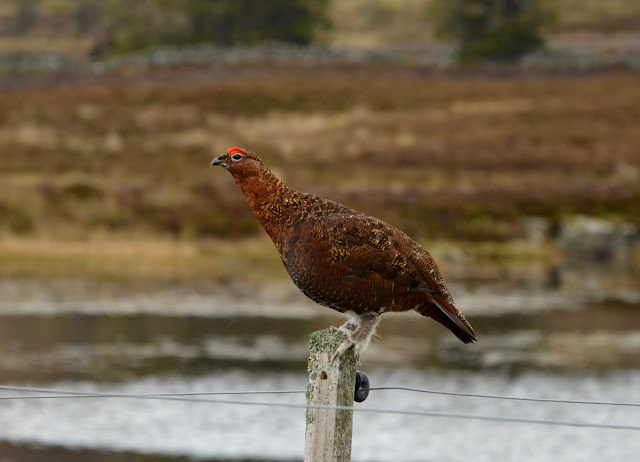#193
This blog post has been difficult to get done. I’ve lately had to spend too much time reading Parkinson’s Disease - Guide for the Newly Diagnosed and Living with Parkinson’s Disease, as well as getting used to new drug treatments. The drug, Cardidopa Levodopa, has made a good difference and I’ve not had any major side effects. I’m also starting PT (physical training) this week. All this means I’ve put the blog on the back burner, but I’ve now turned up the heat and have #193 finished.
As befitting my preoccupation this post is simple—a group of photos of birds we’ve seen on our trips to Scotland. I’m not a bird watcher (or twitcher as they are called in the UK), so my notes on the birds are simple as well. These are just photos of birds that I find interesting. If you notice any errors in my identification, please send a note of correction. I’ve left out crows and ravens, most of the gulls, and many small songbirds, but I hope the rest make for pleasant viewing. On a technical note, most of the photos have been taken with a Nikon D500 using a Tamron 18-400mm lens.
WATERFOWL
Barnacle Geese from Scandinavia (Spitzbergen) will winter in the south of Scotland and those from Greenland will winter in the north. Flocks may have thousands of individuals.
 |
| Barnacle Geese near Nairn in October |
Mute Swans are the Queen’s birds with the Queen’s Right of Ownership since the 12th century.
 |
| Nesting Swan at Blair Castle Gardens |
 |
| Swan in Kilbrannan Sound on the west coast of Isle Arran |
Grebes or Divers come in many varieties and are closely related to flamingos.
Cormorants have very short wings for diving and the highest flight cost (energy) of any flying bird. Often confused with grebes.
 |
| Cormorants from Shiskine GC, Isle Arraan |
Gannets have large breeding colonies on Bass Rock in the east and Ailsa Craig in the west.
 |
| Gannet from the ferry to Skye |
FARMLAND AND WOODLAND
Pheasants in Scotland are mostly of the Mongolian ringneck-type and seem quite suicidal in the fall as they run at your car on the small Scottish roads.
Red Grouse or Moorcocks are marked by their red comb and found mostly on heath or moorland. The most famous of the species is The Famous Grouse (whisky distillery) which used to be caledl Glenturret Single Malt Whisky.
 |
| Red grouse in Glen Quaich |
Capercaille is the largest grouse (turkey-sized). The few reintroduced breeding pairs are much watched over by conservation groups such as the RSPB (Royal Society for the Preservation of Birds).
 |
| Stuffed Capercaille at Balmoral Castle, the Queen's Home |
 |
| Live Capercaille in a Wildlife Refuge, Kingussie |
Oystercatchers (also a wader) are very common on seaside and inland golf courses.
 |
| Nesting Oystercatcher on a Golf Course |
Curlew (wader) can be found in large numbers in the winter on the Orkney Islands where I spotted this one at the Standing Stones of Stenness.
Grey Heron (wader) seen at the Falls of Feugh on the River Dee west of Aberdeen.
SONG BIRDS
Robins and other small birds. Robin Redbreasts are quite common, but they are a version of Eurasian Robin, smaller and not closely related to the American Robin.
 |
| Blue Tit in Aviemore |
 |
| Chaffinch on Hedge |
Cuckoos are elusive and are heard far more than seen. They are related to the Roadrunner of the American southwest. While some lay eggs in other bird’s nests, most raise their own young. This is the only Cuckoo we saw in 34 trips to Scotland and we saw it on Carrbridge GC in the Cairngorm National Park.
BIRDS OF PREY (in order of size)
Kestrel is the only bird of prey that spends time hovering. They are widespread through rural and urban areas and are related to the falcon family.
 |
| At Burntisland GC, Fife |
Red Kites, mentioned in both Chaucer’s “Knight’s Tale” and Shakespeare’s “King Lear,” by the 20th century only a few breeding pairs remained in all the UK. Kites were reintroduced successfully in Scotland in the late 1980s.
Goshawk, a forest hunter, were hunted themselves almost to extinction. Now there are about 100 breeding pairs in Scotland. We saw this one in Branklyn Gardens in Perth.
Osprey winter in Africa and are being successfully reintroduced in several areas of Scotland. We saw this Osprey near the RSPB reserve on Loch Garten in the Highlands. We’re used to seeing them in the northwest, but a sighting of an Osprey in Scotland is quite special.
NEXT: Let’s cross that bridge when we come to it.











